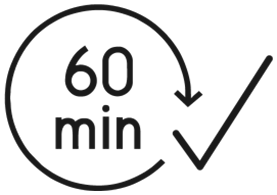Coaching and mentoring

What is it used for?
Coaching is a process of expert guidance for the client toward the best solutions they can reach based on their own experiences and ideas. A professional coach does not need to be an expert in the field they are working on with their client; it is enough for them to be skilled in encouraging the client to maximize their potential.
Mentoring is a process of expert guidance for the client toward the best solutions that can be reached together by the client and the mentor. A professional mentor must be an expert in the field they are working on with their client, including the skills needed to encourage the client to maximize their potential.
How is it implemented?

Before the start of the month, session dates (workshops) are agreed upon. Sessions can be held in person or online. Before each session, the client announces the topic/area that will be addressed. During the session, the coach/mentor guides the client toward a solution through conversation.

The session lasts 60 minutes. At the end of each session, the client is required to express their satisfaction and desire to continue the collaboration. It is not recommended to have more than one session per week. Within the agreed collaboration, multiple executives can work simultaneously with multiple coaches/mentors.
How does it begin?
After expressing interest, the client and the coach/mentor schedule an introductory meeting (in person or online). The client presents their areas of interest, while the coach/mentor shares their experiences in those areas. They determine/confirm the desire to collaborate, schedule the first session, and begin their partnership.

How is payment made?
The introductory meeting and the first session are free of charge. All subsequent sessions are paid for at the end of the month, based on the number of sessions that took place. The price of a session depends on the level of expertise of the coach/mentor and the total number of sessions held during the month (the total number of sessions is calculated at the company level).

Areas of collaboration

- Company success analysis
- Diagnosis of internal organization
- Company vision
- Company mission
- Goal setting
- Organizational structure of the company
- Job systematization
- Sales organization
- Sales channels
- Sales planning
- Sales policy
- Sales enhancement techniques
- Customer Relationship Management (CRM) and Customer Experience Management (CEM)
- Procurement organization
- Category management
- Procurement policy
- Strategic marketing
- Operational marketing
- Production organization
- Production planning
- Human resources (analysis, acquisition, development)
- Salaries, bonuses, and reward systems
- Quality control
- Sales planning
- Sales team organization
- Sales performance analysis
- Customer categorization
- Market segmentation
- Sales reports
- Customer relationship management (CRM)
- Customer experience management (CEM)
- Sales channels
- Sales policy and customer reward systems
- Market expansion
- Sales enhancement techniques
- Sales and marketing/procurement/logistics
- Sales and finance
- Salaries, bonuses, and reward systems
- Loyalty programs
- Customer churn
- Accounts receivable collection
- Salesperson motivation
- Cross-selling and up-selling
- Merchandising
- Sales and marketing campaigns
- Marketing communication tools
- …
- Procurement planning
- Organization of the procurement team (by product categories, by suppliers, by sourcing regions, etc.)
- Supplier selection
- Supplier categorization
- Introduction of new assortments and products
- Measurements and reports in procurement
- Category management
- Inventory management and accountability
- Ordering software
- Success indicators in procurement
- Economic order quantity
- Procurement parity
- Safety stock
- Demand predictability
- Seasonal tracking in procurement
- Slow-moving inventory/dead stock
- Stock out (out of stock)
- Inventory management indicators
- Reward systems in procurement
- Procurement budgets
- Procurement process control
- …
- Organization of the finance team
- Relationship between finance and accounting
- Financial controlling
- Official and managerial reports
- Balance sheet
- Profit and loss statement (P&L)
- Cash flow statement
- Liquidity
- Profitability/Return on investment
- Business financing
- Relations with banks
- Operating cash cycle
- Break-even point
- Costing of products
- Inventory management methods
- Accrual accounting
- Depreciation of equipment
- Business plan development
- Investment profitability assessment
- …
- Organization of the logistics team
- Transportation organization
- Routing plan and dispatching
- Reverse logistics
- Cost-effectiveness analysis of route distribution
- Complaint management
- Transportation optimization software
- Vehicle maintenance management
- GPS monitoring
- Warehouse organization and layout
- Selection of warehouse equipment
- Organization of traceability systems
- Customs warehouses
- Order picking
- Warehouse management system (WMS)
- Inventory management and accountability
- Assortment and inventory level optimization
- Establishment of a new warehouse/distribution center
- Success indicators in logistics (KRI and KPI)
- Stock out (out of stock)
- Inventory management indicators
- Reward systems in logistics
- Ordering software
- …
- Organization of the production team
- Organization of the production process
- Production layout
- LEAN methodology
- KAIZEN
- Tools for process analysis and improvement (VA/NVA, OEE, Tact time/Cycle time, SMED, Spaghetti diagram)
- Complaint management
- Analysis of rework and scrap
- Organization of traceability systems
- Quality control
- 5S methodology
- Production planning (make-to-order, line production)
- Total Productive Maintenance (TPM)
- Inventory level optimization
- Establishment of a new production facility
- Success indicators in production (KRI and KPI)
- Employee motivation
- Reward systems in production
- Production planning software
- …
- Organization of the HR department
- Candidate selection and recruitment
- Job advertisement creation
- Candidate interviews
- Onboarding
- Offboarding
- Performance management and annual evaluation of managers and employees
- Employee satisfaction assessment
- Job systematization
- Employee reward system
- Employee competency development plan
- Organization of employee training
- Employee motivation
- Reward systems
- Fixed salaries
- Variable compensation
- Additional employee incentives
- Employee potential assessment
- Formation of successful teams
- Improvement of accountability systems
- Establishment of processes and procedures
- Job descriptions
- …
- (Ir)responsibility of colleagues
- Too many tasks, not enough time
- Constant problems
- Business or personal?
- How to advance in your career?
- How to resolve conflicts?
- How to tell a superior what they are doing wrong?
- How to negotiate for your own interests?
- Where to start?
- How to find people?
- I’m losing motivation
- What do I really want?
- Can I change the people around me?
- How to manage emotions?
- Am I weak if I cry?
- Where are my boundaries?
- I’m losing focus
- I delegate and still nothing
- Why the changes again?
- How to change habits?
- I’m a bit indecisive
- What if I fail?
- I don’t finish things to the end
- …